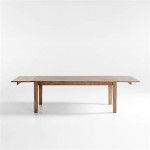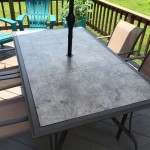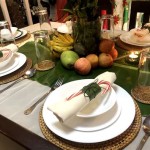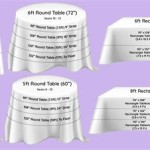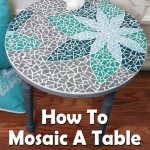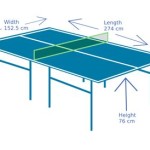The Allure of the Tree Root Coffee Table with Glass Top
The tree root coffee table with a glass top represents a unique intersection of natural artistry and functional design. It is not merely a piece of furniture, but a statement, a conversation starter, and a testament to the enduring beauty of the natural world. Its appeal stems from the inherent irregularity and distinctiveness present in each individual root system, coupled with the sleek, modern aesthetic provided by the glass surface. The combination creates a captivating contrast that resonates with those seeking to incorporate organic elements into their living spaces.
These tables, frequently categorized as rustic, bohemian, or even minimalist depending on the root's specific form and the surrounding décor, are often handcrafted, emphasizing the artisan nature of their creation. The process typically involves carefully selecting a visually striking root system – often from reclaimed wood sources to promote sustainability – cleaning and preserving the wood, and then carefully crafting a supportive base upon which to rest the glass top. The glass itself serves not only as a functional surface but also as a viewing portal, allowing the intricate details of the root structure to be fully appreciated.
The incorporation of these tables into home design offers a palpable connection to the outdoors, a reminder of the complex and interconnected systems that exist beyond the confines of urban environments. In an era dominated by mass-produced, homogenous furniture, the tree root coffee table with a glass top stands out as a symbol of individuality and appreciation for the inherent beauty found in the imperfection of nature.
Key Points to Consider When Choosing a Tree Root Coffee Table
Selecting the right tree root coffee table with a glass top involves considering several fundamental aspects, encompassing both aesthetic preferences and practical considerations. A thorough understanding of these elements ensures that the chosen piece seamlessly integrates into the space and contributes positively to the overall design scheme.
1. Root System Characteristics:
The core element, the root system itself, exhibits significant variation in terms of size, shape, texture, and wood species. A broader, more sprawling root might be ideal for a larger living room, while a smaller, more vertically oriented structure may suit a more compact space. The wood species influences the color and grain pattern, with options ranging from lighter hues of birch or maple to the richer tones of walnut or oak. The texture, ranging from smooth and polished to rough and weathered, contributes to the table's overall character. A careful assessment of these characteristics is crucial to ensure the root system complements the existing décor and fulfills the desired aesthetic.The level of preservation and finishing applied to the root also plays a vital role. Some prefer a completely natural look, retaining the original weathering and imperfections, while others opt for a more refined finish with sealant and varnish to protect the wood and enhance its visual appeal. The choice hinges on the desired level of rusticity and the degree of maintenance one is willing to undertake.
The presence of unusual formations or unique features within the root system can also be a deciding factor. Knots, burls, or unusual twists can add character and contribute to the table's overall uniqueness. However, it's important to ensure that these features do not compromise the table's stability or functionality.
2. Glass Top Specifications:
The glass top is not merely a utilitarian surface; it is an integral part of the design and contributes significantly to the table's overall aesthetic and functionality. Consider the shape, size, thickness, and edge treatment of the glass.The shape should complement the outline of the root system. A round or oval glass top often works well with more organic, flowing root formations, while a square or rectangular top may be better suited for more angular or symmetrical roots. The size of the glass top should be proportionate to the root system, ensuring that it provides ample surface area without overwhelming the underlying structure.
The thickness of the glass is crucial for safety and durability. Thicker glass is generally more resistant to breakage and can support heavier objects. Tempered glass is often recommended, as it shatters into small, relatively harmless pieces if broken. The edge treatment, such as beveled, rounded, or polished edges, affects the table's visual appeal and adds a touch of sophistication.
Beyond the physical attributes, the clarity and color of the glass can also impact the overall design. Clear glass allows for maximum visibility of the root system, while tinted or frosted glass can create a more subtle or diffused effect. Consider the lighting conditions in the room and how the glass will interact with the surrounding décor when making this decision.
3. Structural Integrity and Stability:
Aesthetically pleasing or not, the table must be structurally sound and stable. This involves careful examination of the root system's support structure and the attachment method between the root and the glass top.The root system should be adequately braced and stabilized to prevent wobbling or tipping. This may involve adding additional supports underneath the roots or filling any voids or weak points with epoxy resin. The base should be level and capable of supporting the weight of the glass top and any objects placed upon it.
The method of attaching the glass top to the root system is also critical. Ideally, the glass should be securely fastened to the root system without compromising its structural integrity. Options include using silicone adhesives, suction cups, or metal brackets. Ensure that the chosen method is robust and reliable, preventing the glass from shifting or detaching from the base.
Furthermore, consider the table's weight and ease of movement. A heavier table may be more stable but also more difficult to reposition. Factor in the anticipated use and the frequency with which the table may need to be moved or rearranged when making this assessment.
Maintaining Your Tree Root Coffee Table
Proper maintenance is essential to preserve the beauty and longevity of a tree root coffee table with a glass top. Regular cleaning and preventative measures can safeguard against damage and ensure that the table remains a focal point in the living space for years to come.
The glass top should be cleaned regularly with a glass cleaner and a soft cloth to remove dust, fingerprints, and other smudges. Avoid using abrasive cleaners or scouring pads, as these can scratch or damage the glass surface. For more stubborn stains, a solution of vinegar and water may be effective.
The wood component requires different considerations. Dust and debris should be removed regularly with a soft brush or vacuum cleaner. Avoid placing the table in direct sunlight or near sources of heat, as this can cause the wood to dry out and crack. Periodically applying a furniture polish or oil can help to nourish the wood and maintain its luster.
For unfinished or naturally weathered wood, consider applying a sealant or protectant to prevent moisture damage and staining. This is particularly important if the table is located in a high-humidity environment. Check the sealant periodically and reapply as needed to maintain its effectiveness.
Styling Your Space with a Tree Root Coffee Table
Integrating a tree root coffee table with a glass top into a living space requires careful consideration of the surrounding décor and the desired aesthetic. The table's unique character can be leveraged to create a focal point or to complement existing design elements.
Consider the overall style of the room. A tree root table can be incorporated into a variety of styles, from rustic and bohemian to modern and minimalist. In a rustic setting, pair the table with other natural materials, such as leather furniture, woven rugs, and wooden accents. In a more modern setting, contrast the table's organic form with sleek, geometric furniture and metallic accents.
The placement of the table is also crucial. In a larger living room, the table can be placed in the center of the seating area to serve as a focal point. In a smaller space, it may be better positioned off to the side or against a wall to maximize space. Consider the flow of traffic and ensure that the table does not obstruct pathways.
Accessorizing the table can further enhance its visual appeal. Consider adding a few carefully chosen items, such as a stack of books, a decorative bowl, or a small plant. Avoid cluttering the surface with too many items, as this can detract from the table's inherent beauty. The goal is to complement the table without overwhelming it.

Root Coffee Table With Glass Top

Teak Root Coffee Table Round Glass Top Reclaimed Wood Kipling

Teak Root Round Coffee Table Homeplus Furniture

Teak Root Coffee Table With Glass Top Wooden

Tree Root Glass Coffee Table The Design Library

Whole Uttermost Accent Furniture Mirrors Wall Decor Clocks Lamps Art

Mid Century Teak Tree Root Coffee Table With Beveled Glass Top For At Pamono

Java Teak Root Coffee Table Wood Culture

Tree Root Stone Glass Coffee Table

Square Root Coffee Table With Glass Topdefault Title Wooden
Related Posts


